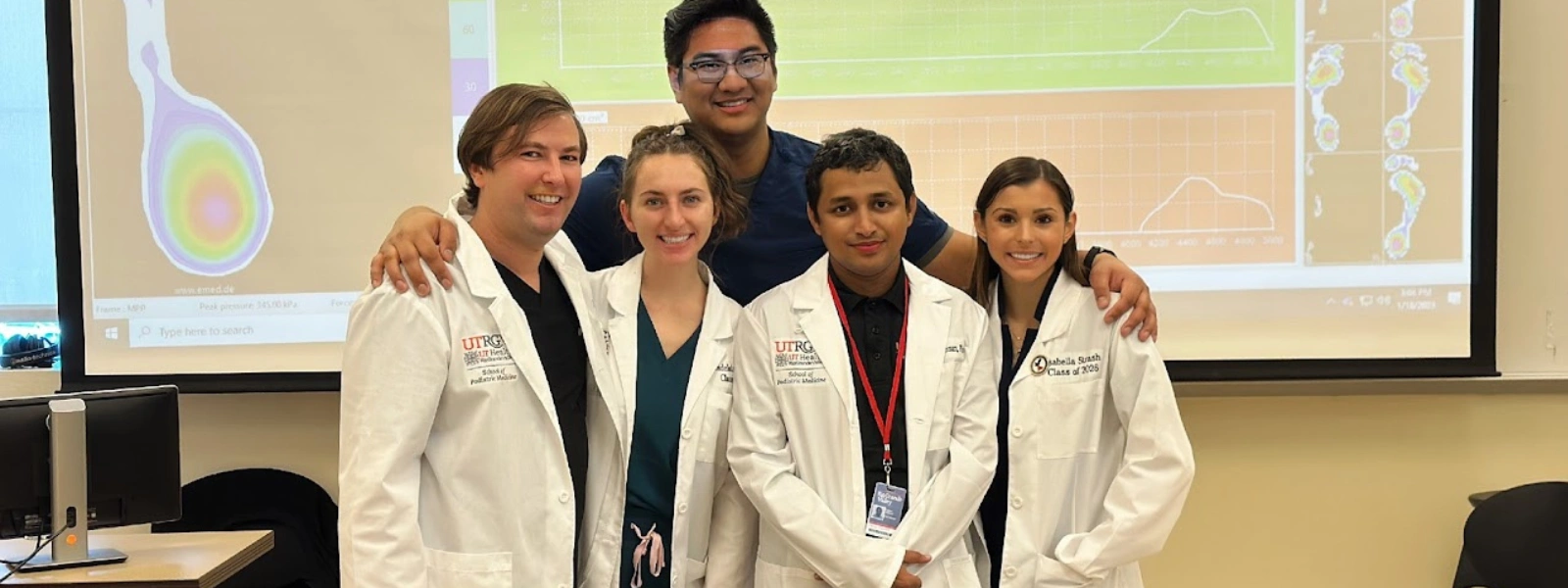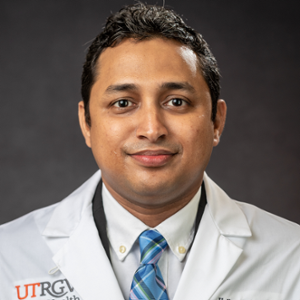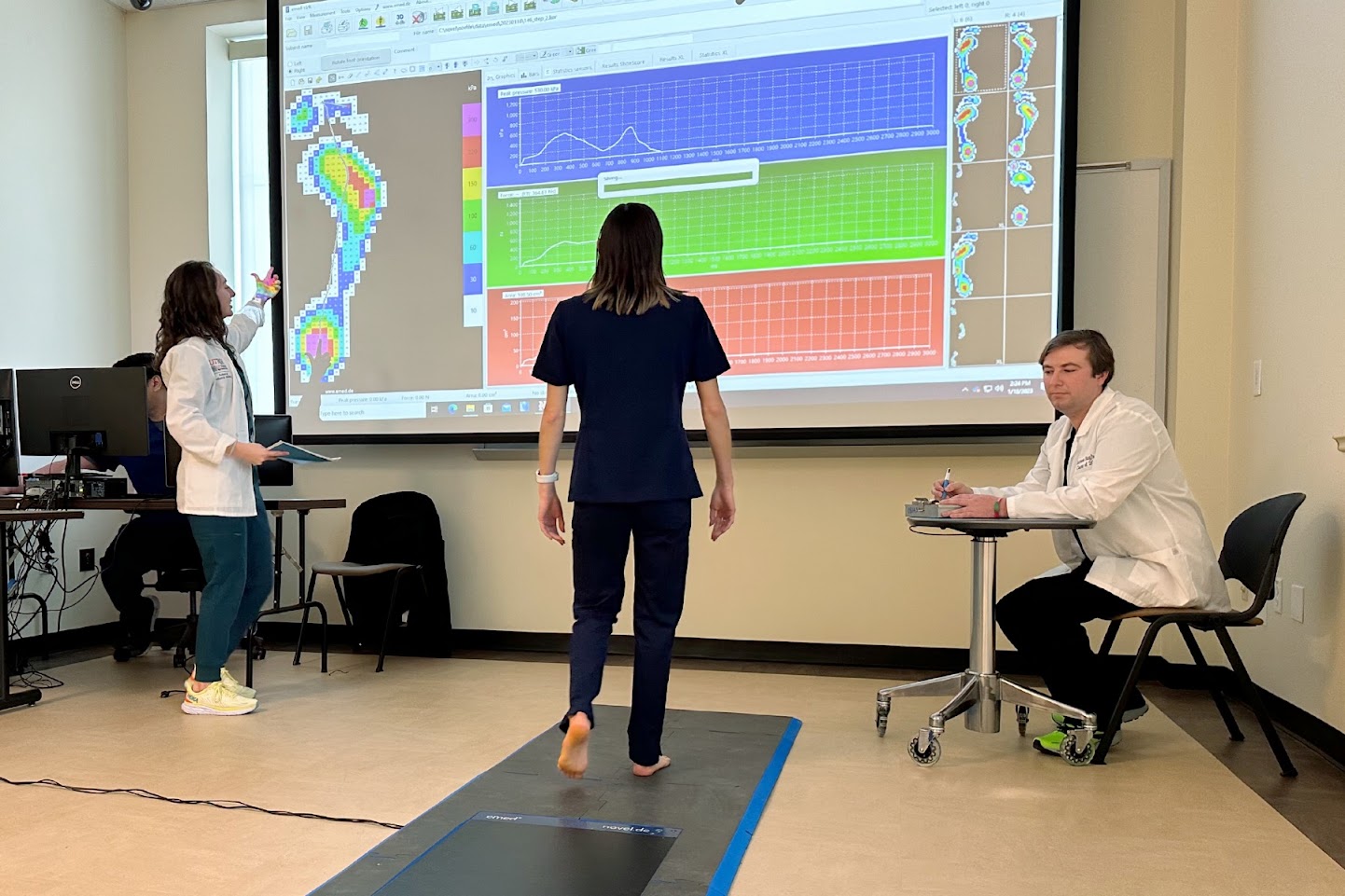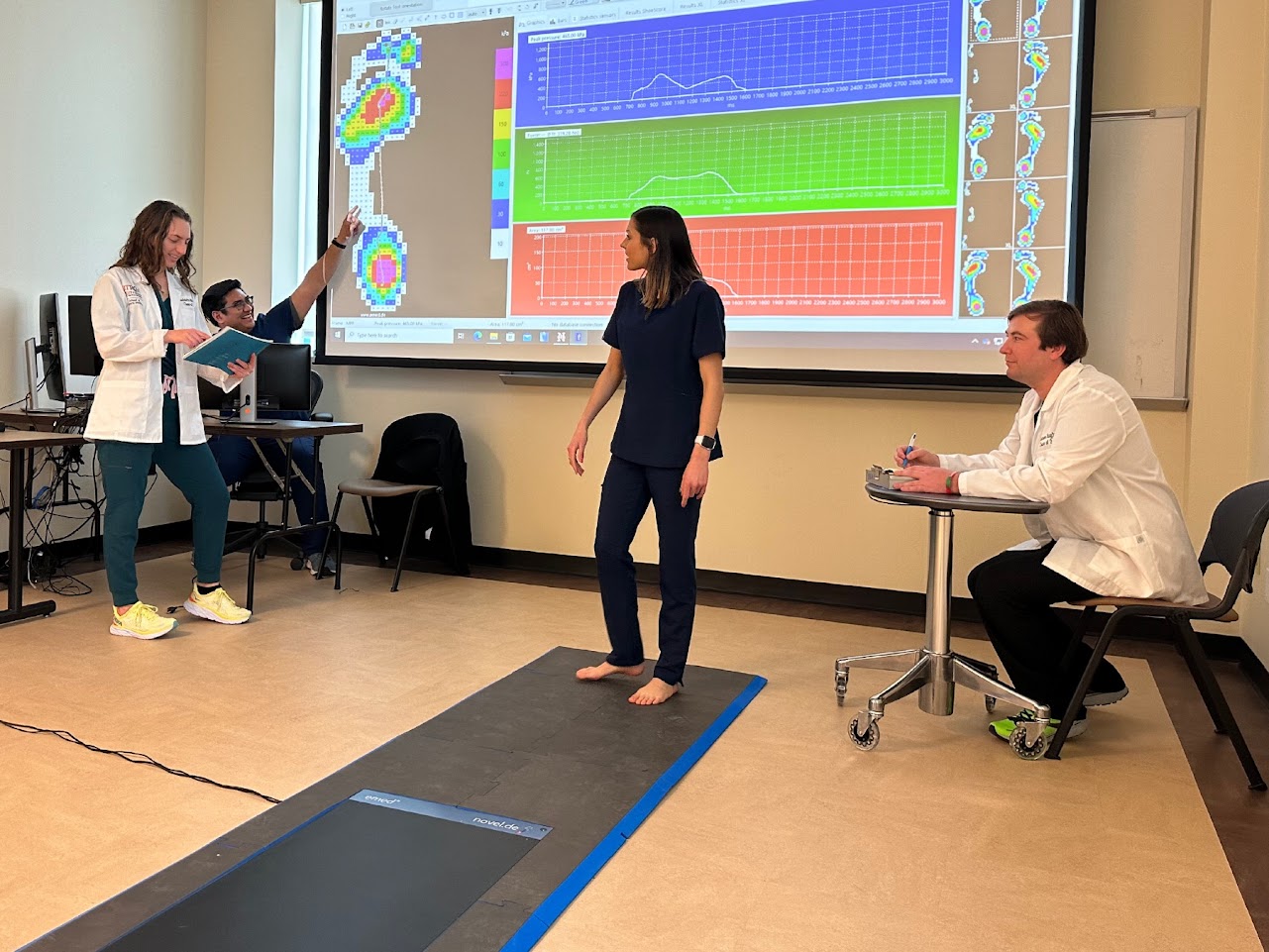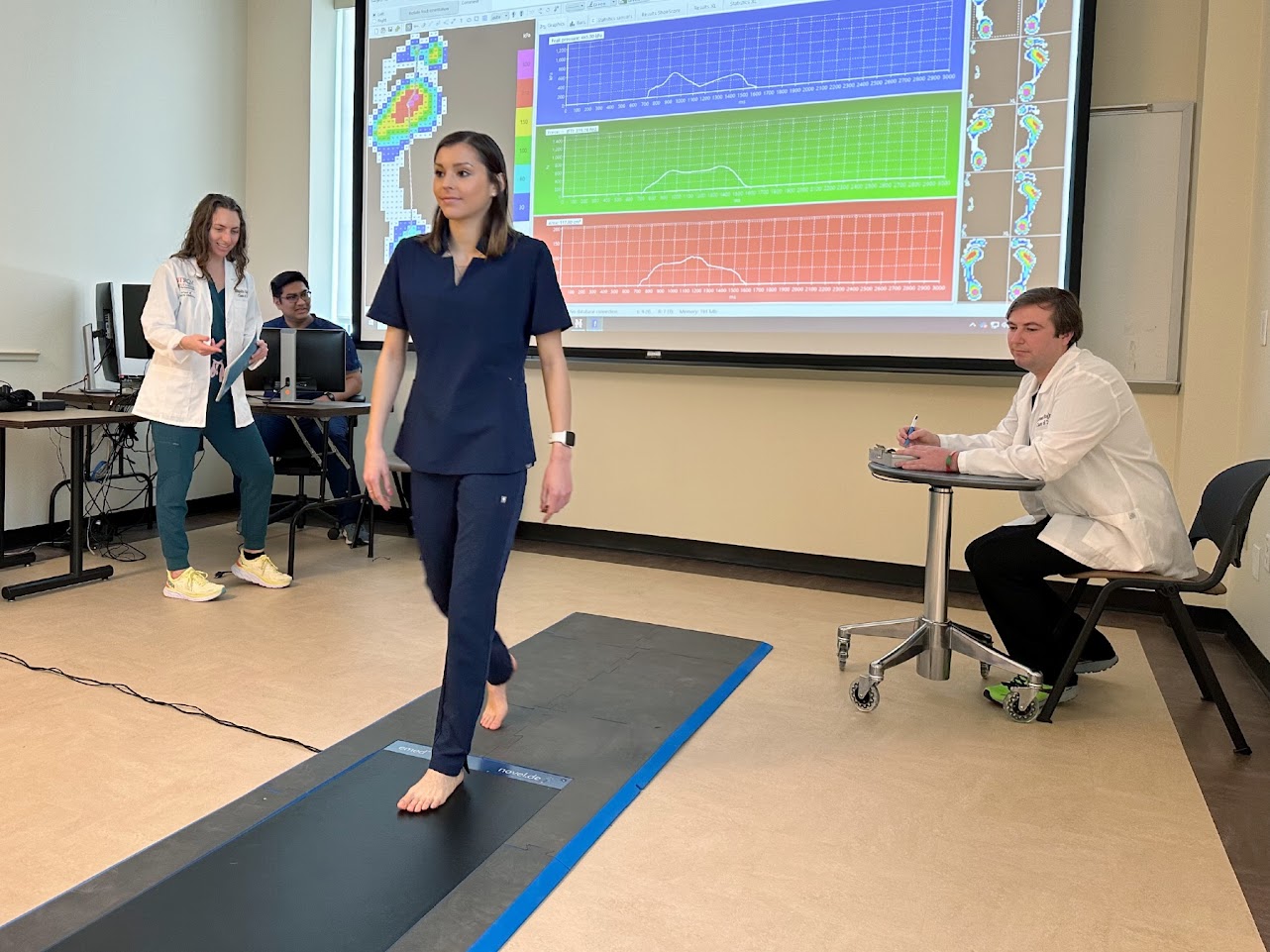About
Applied Biomechanics of the Lower Extremity (ABLE) Laboratory
Director and Principal Investigator: Hafizur Rahman, PhD
Students: James Hughes, Madeleine Mehaffey, Nicholas Obias, Isabella Strash
The ABLE lab conducts clinical and translational research directly related to foot and ankle deformities to improve health care delivery. The ABLE lab aims to improve mobility, functional independence, walking performance, and quality of life in patients with foot and ankle dysfunctions, using advanced gait biomechanical analysis, finite element modeling, musculoskeletal modeling and simulation, and variability analysis. The ABLE lab’s research outcomes will deliver high-quality health care in South Texas, providing comprehensive medical and surgical management for foot and ankle care.
The ABLE lab provides hands-on experience using advanced biomechanics tools for foot and ankle biomechanics research to podiatric medical students, along with the didactic lectures in the classroom. The students get the opportunity to learn the fundamentals of gait biomechanics and how gait biomechanics can be related to treating specific diseases. Understanding the biomechanical effects of various treatment procedures for different pathological conditions in foot and ankle complexity clarifies how gait dysfunctions can occur in the lower extremity and whether the existing treatments restore the lower extremity gait biomechanics. This will lay the foundation for podiatric medical students to utilize the biomechanics tools in a clinical setting in the future to better understand and diagnose a specific disease and to develop novel interventions through evidence-based biomedical research.
Current Research Projects
Student Researcher: James Hughes
Project Description: Equinus is an ankle dysfunction that limits the dorsiflexion at the ankle joint. Equinus can express itself through many painful symptoms such as Metatarsalgia, Posterior tibial tendon insufficiency, Plantar fasciitis, and Stress fractures. Current literature is limited in explaining how plantar pressure is associated with painful symptoms in patients with Equinus. The ABLE lab at the UTRGV SOPM is investigating the plantar pressure distribution in patients with Equinus experiencing different symptoms of pain and how conservative treatments such as proper shoe gear, orthotics, and ankle-foot orthoses may relieve plantar pressures.
Biomechanics Faculty: Dr. Hafizur Rahman
Student Researcher: Madeleine Mehaffey
Project Description: Increased plantar pressures, biomechanical deformities, and foot temperature have been shown to significantly contribute to comorbidities such as diabetic foot ulcerations, foot pain, corns and calluses, and many other health burdens. By wearing custom-fit devices, such as prefabricated depth and custom shoes, footwear modifications, and orthoses, diabetic neuropathy patients can redistribute pressure by lowering the peak plantar pressure in specific areas and eventually help prevent foot ulceration and ulcer recurrence. This project aims to investigate the effectiveness of several therapeutic shoes, prefabricated inserts, and socks that determine the best orthosis for reducing plantar pressures and foot pain by quantitatively measuring dynamic in-shoe plantar pressure distribution.
Biomechanics Faculty: Dr. Hafizur Rahman
Student Researcher: Isabella Strash
Project Description: Hammertoes are one of the most common toe deformities, causing pain and swelling in the affected toes. A hammertoe deformity is defined as dorsiflexion at the metatarsophalangeal joint (MTPJ) with plantarflexion at the proximal interphalangeal joint (PIPJ). Toe arthroplasty with K-wire fixation is the most common surgical approach in correcting deformities. Hammertoes increase peak plantar pressure and stress beneath the affected toes during gait, eventually leading to skin ulceration. However, the existing literature does not clarify how surgical correction redistributes plantar pressure. The overall goal of this research study is to determine and compare peak plantar pressure and gait characteristics during walking in patients with hammertoes deformities for pre- and post-operative conditions.

